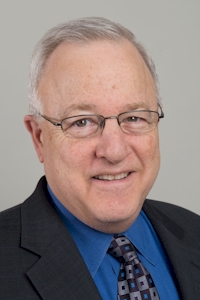In its May 10, 2018 edition, I am SWANA News published an interview with GBB President and Co-Founder Harvey Gershman:

Interview with Harvey Gershman
What to Expect from China’s National Sword & its Implications for WTE
 At the North American Waste-To-Energy Conference (NAWTEC), kicking off next week in Lancaster, Pennsylvania, Harvey Gershman, President and Co-Founder of Gershman, Brickner & Bratton, Inc. will team up with SWANA Executive Director and CEO, David Biderman, to discuss the latest developments on China’s waste import restrictions and delve into how these new regulations will affect waste-to-energy (WTE) on a local and global scale.
At the North American Waste-To-Energy Conference (NAWTEC), kicking off next week in Lancaster, Pennsylvania, Harvey Gershman, President and Co-Founder of Gershman, Brickner & Bratton, Inc. will team up with SWANA Executive Director and CEO, David Biderman, to discuss the latest developments on China’s waste import restrictions and delve into how these new regulations will affect waste-to-energy (WTE) on a local and global scale.
To get a sneak-peek of what to expect from the presentation, we spoke with Gershman about what he will be speaking about and what we can expect to learn from the discussion.
Q: What do you see as some of the main challenges for WTE professionals in the wake of China’s waste import restrictions?
A: The focus of the pushback is on mixed paper and plastics. While other export markets are being developed, and China continues to turn away from using recycled content feedstocks, attention needs to be focused on creating domestic markets for converting outputs from the hundreds of material recovery facilities (MRFs) across the U.S. into recycled raw materials and/or products here in the U.S. While the market is adjusting, existing WTE facilities with capacity can utilize the significant energy content of mixed paper and plastics to produce steam and power. Although not as good as recycling, WTE would be a higher environmental use as compared to landfilling these materials.
Longer term, WTE facilities both existing and new, should be viewed as a participant in creating local circular economies where waste is processed into recyclables and fuel and converted in raw materials and products. The manufacturing of products can be powered by the non-recyclable fuel portion of the waste stream. For example, producing recycled paper grades from the paper bales produced at MRFs requires significant steam production to dry the pulped fiber in the manufacturing process.
Q: What is some advice you would give to solid waste and WTE professionals who are navigating the new policy changes?
A: WTE professionals should initiate dialogue in their communities and state governments about creating domestic capacity to utilize the recyclable feedstocks coming out of MRFs. Our recycling programs are a source of reasonably clean raw materials that for the most part have been leaving the US. Let’s focus our efforts to use them here and make products made here, and to the extent fuels and/or energy from waste can power the production the better. Let’s see that slogan “Made in the U.S.A.” stamped on more things we buy in the future!
Q: What are some small and large-scale insights you hope NAWTEC attendees will take away from your presentation/discussion?
A: On the smaller scale, I believe people always need to be mindful of waste generation and do their part to reduce, reuse, and recycle. We need to be mindful of the short-term reactions the public may have when they hear that China isn’t taking our recyclables and hearing that the recyclables collected are being landfilled or stockpiled after being processed at the MRF. Meanwhile, we want the source separated recyclables to be cleaner so the MRFs have a better chance to produce higher quality recyclables that can be sold. It will be imperative to communicate with your customers about these added challenges and stress that there are both short-term and long-term solutions.
On the larger scale, I hope that NAWTEC attendees walk away feeling that the China situation presents a long-term opportunity to create a more sustainable circular waste management domestically rather than relying on export markets.
Reproduced with permission of the Solid Waste Association of North America (SWANA)





